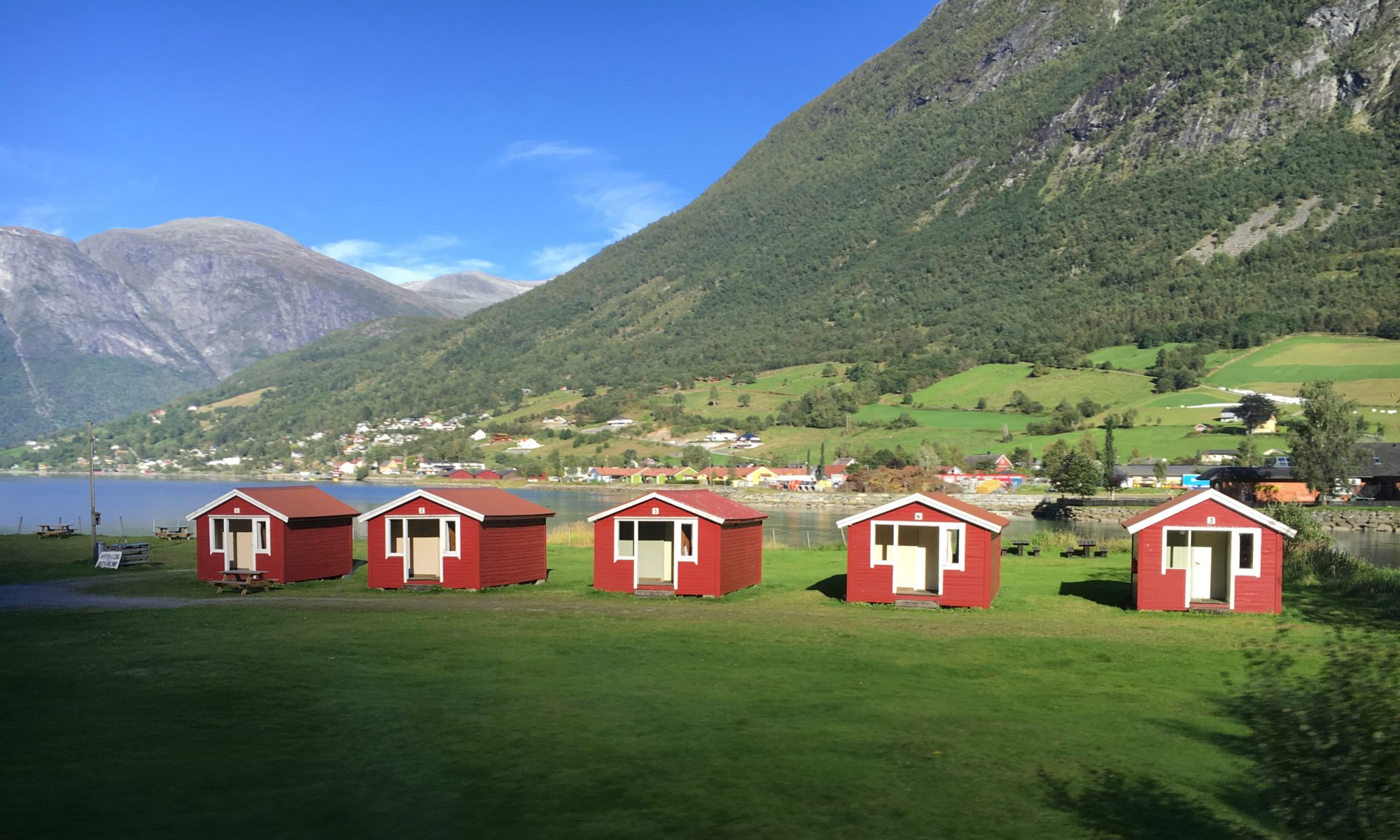I’ve always been a lover of art. From childhood museum trips to concerts and ballet, I was raised to appreciate all forms of art. I’d be hard-pressed to choose a favorite medium. And yet, in the realm of visual art, there is something about sculpture that truly speaks to me. Of course, as with all great art, these photographs don’t truly do them justice. I hope you’ll get to see them in person. I hope I get to see them again.
in addition to being beautiful works of art, many sculptures are crafted out of materials that enable them to be outside, therefore presenting themselves as public works of art as well as merely aesthetically pleasing ones. Many cities, including New York, have sculptures in front of buildings, nestled in public gardens, or along waterfronts. Seek them out. See how they interact with the surroundings. Do you feel there is a difference between a sculpture and a statue? Tell me about it in the comments below.
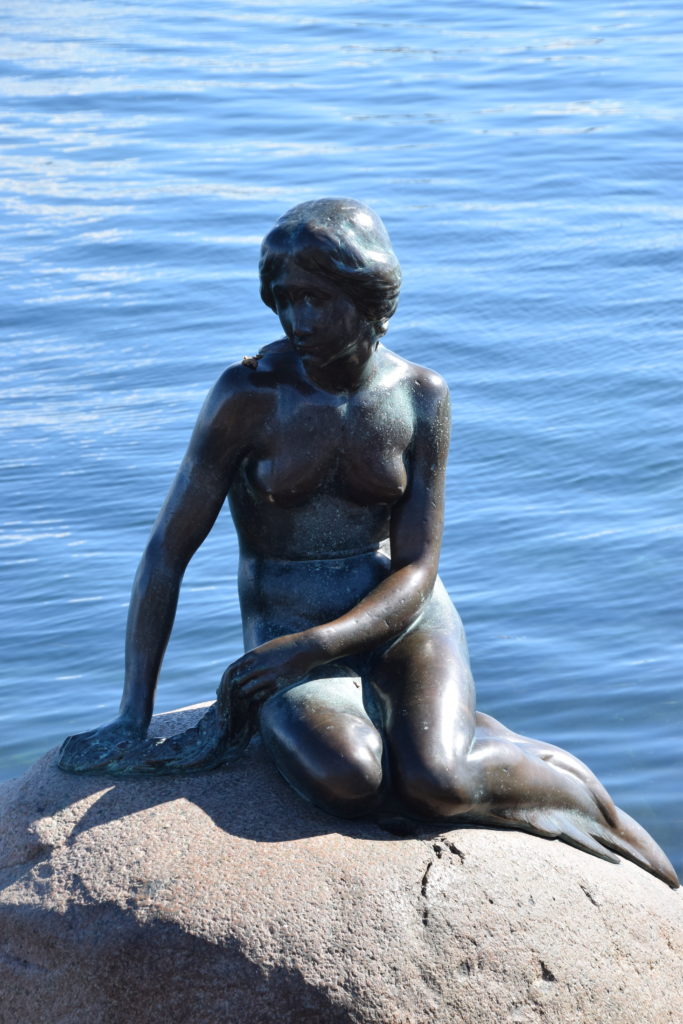
The Galleria dell’Academia presents Michelangelo’s sculptures of The Slaves in the hallway leading up to what many consider to be his sculptural masterpiece. As stunning as The David is, these sculptures of The Slaves captured my heart and showed me Michelangelo’s true genius. These figures appear trapped in the marble, half escaping only due to Michelangelo’s very talented hand. They are breaking out, but still confined to their home of rock. It is one thing to see a finished product in a sculpture like The David, but another experience altogether to feel as though you are present at the creation of the art as one does when looking at these half-liberated creatures.

In addition to the traditional sculptures that everyone knows, consider doing a little research ahead of time and scoping out some lesser known sculptures. I had read about Man Hanging Out, a sculpture by David Černý, a popular artist in the Czech Republic. The man is representative of Sigmund Freud, and although there are many interpretations of his meaning or what he’s doing, no one can dispute the expressionism of his face. When we toured Prague, I specifically asked our tour guide if we could visit this sculpture. He hangs from an eight-story building on a tucked-away minor street in the old town, and not many people know about him.
Our tour guide was excited to bring us to see Man Hanging Out because she said she didn’t often get to lead people there. I was glad that my curiosity could be a source of enjoyment for her, too. She then took us to see another sculpture by
Černý of two men urinating on an outline of the shape of the country. It is actually called “Two Men Peeing.” I was less enamored of this sculpture, but I did appreciate that it accomplished what I think all art should do – it made me feel and think. Many of Černý’s works are equally odd or controversial, and they are worth a gander.
The sky was overcast and colorless on the day we visited the good doctor hanging out above the streets of Prague; as a result, I think he looks even more starkly contrasted against nothingness. It’s a bit chilling and I think it’s great.
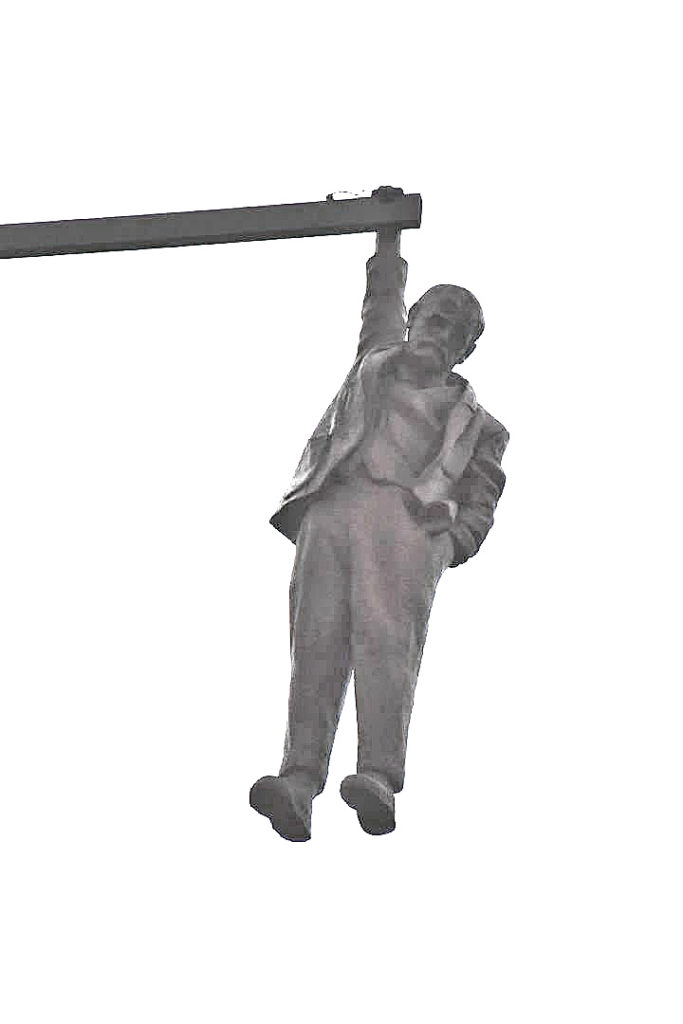
Back to the classics, for a moment. In Paris, my mother and I spent an inordinately long amount of time at the Rodin museum. In truth, I probably could have spent many more hours there, and would have liked to return the next day.
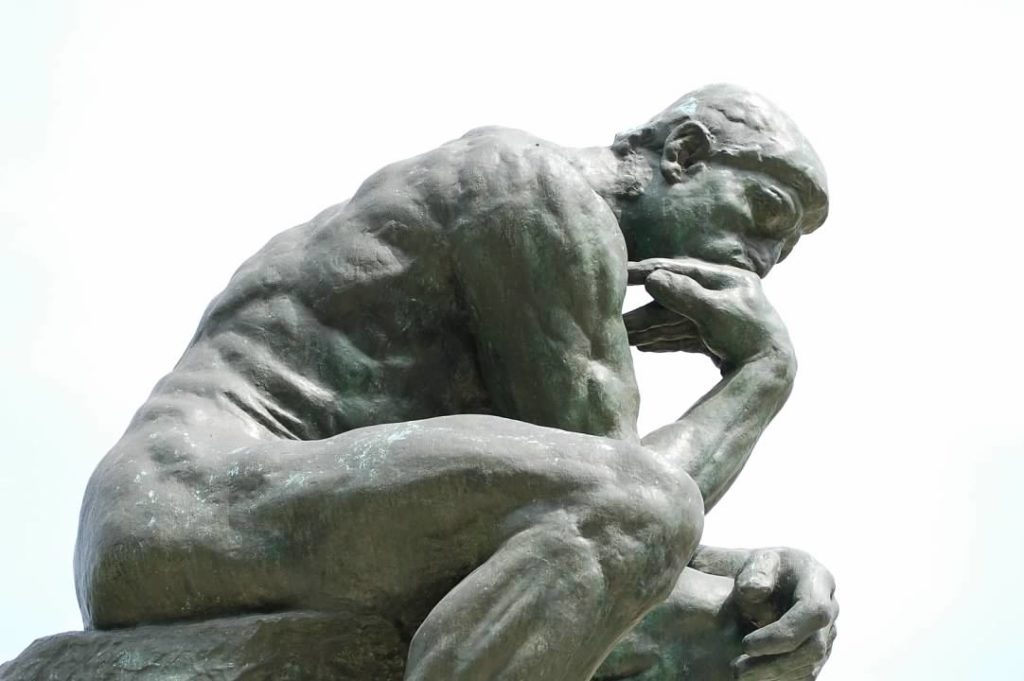
The Thinker was originally the centerpiece for Rodin’s Gates of Hell, which are also at the gardens. As much as a photograph cannot do justice to sculpture in general, I quickly gave up hopes of photographing the Gates of Hell. I have pictures of it, but they could never convey the impact of the piece, so they remain tucked away. When Rodin created The Thinker as a stand-alone piece, he cast many versions of the figure in the monumental size as well as what is called “study” size. Today, almost thirty versions exist around the world.
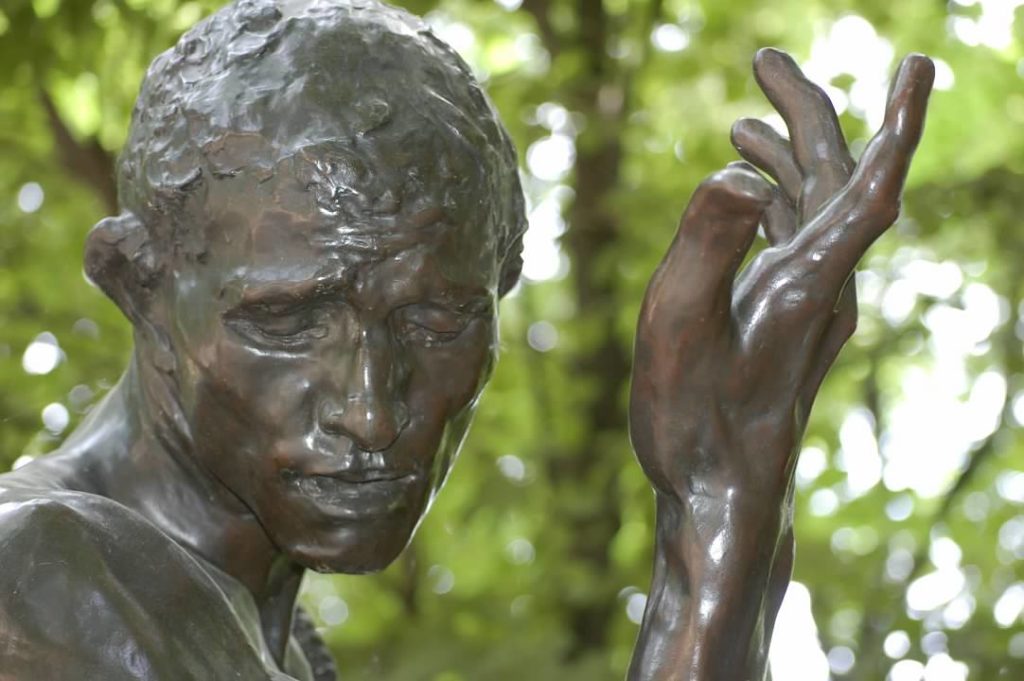
In contrast to a painting, one of the things a sculpture can use to create a feeling is the space in and around the material. Here, Rodin uses the space in between the two hands to evoke the feeling of standing in the open expanse of a cathedral. I remember seeing this sculpture as a child (there is a copy at the Rodin Museum in Philadelphia, which my family visited on one of our Monday trips) and trying to form my hands in the same shape as these. There is something about the gentle touching, pinky resting against thumb, that suggests an intimacy that evokes comfort and desire.
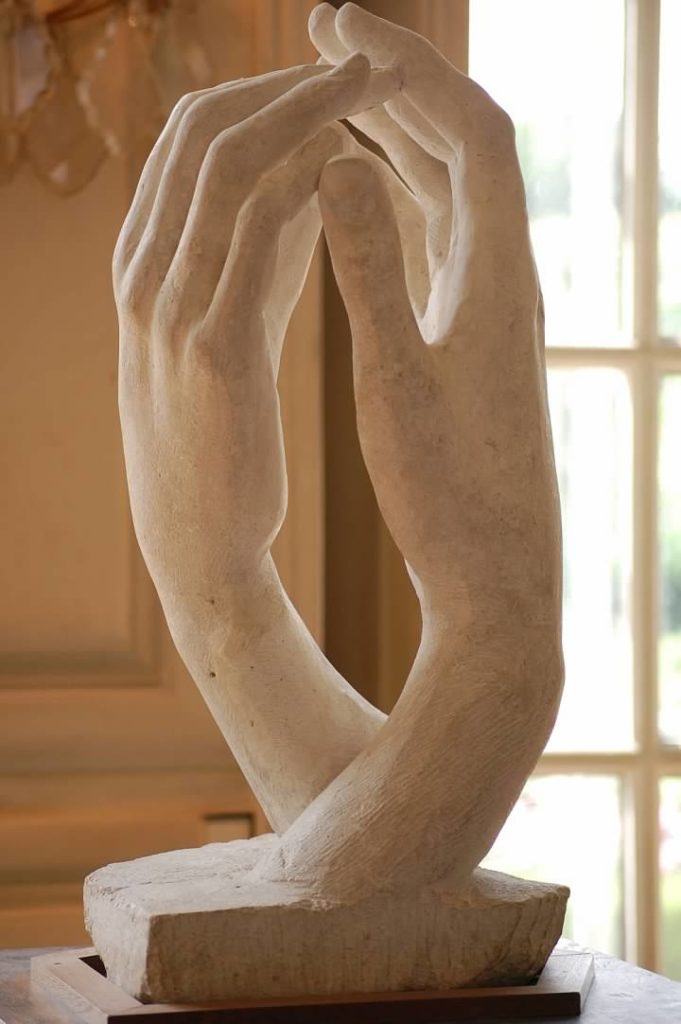

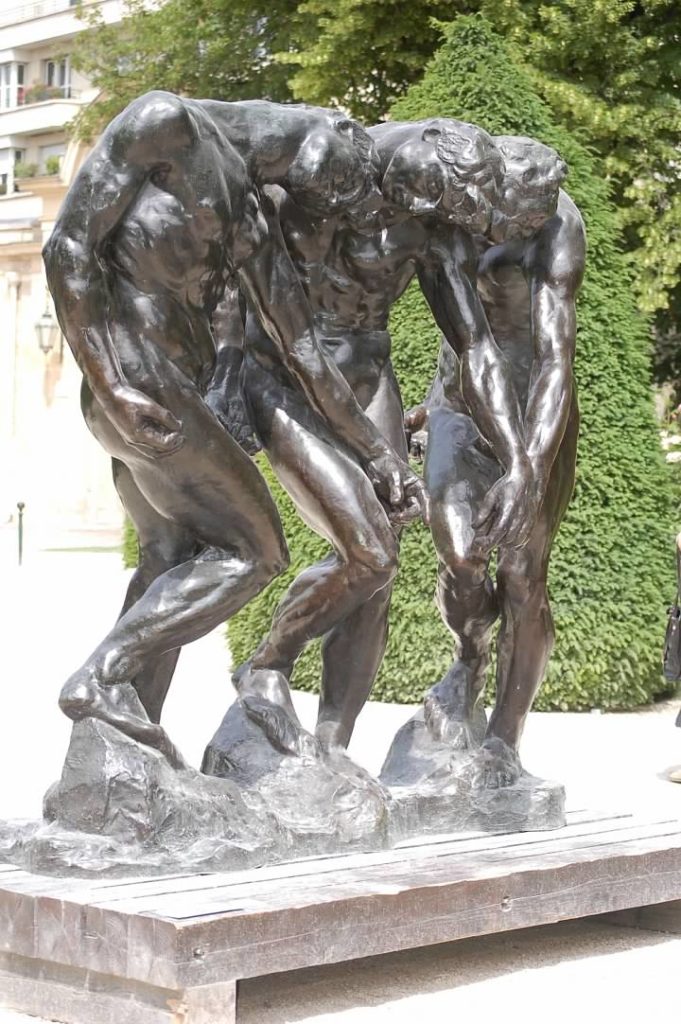
One more thing: a word about public art. Many cities, New York included, have programs where any building that uses public funds must dedicate a portion of those funds to some kind of art. Because of the nature of these buildings and what they are seeking to do, much of this art is open to the public, and much of it is outside. Some is even sculpture. New York’s program is called “Percent for Art” and has been in existence since the early eighties. It is organized through the Department of Cultural Affairs for the city. In looking up information for this post, I learned that the program estimates that 43% of the artists are women, and 34% are artists of color. When you are visiting a city, be sure to check into their own Percent for Art type of program to see if there’s something off the beaten path that you might enjoy.

